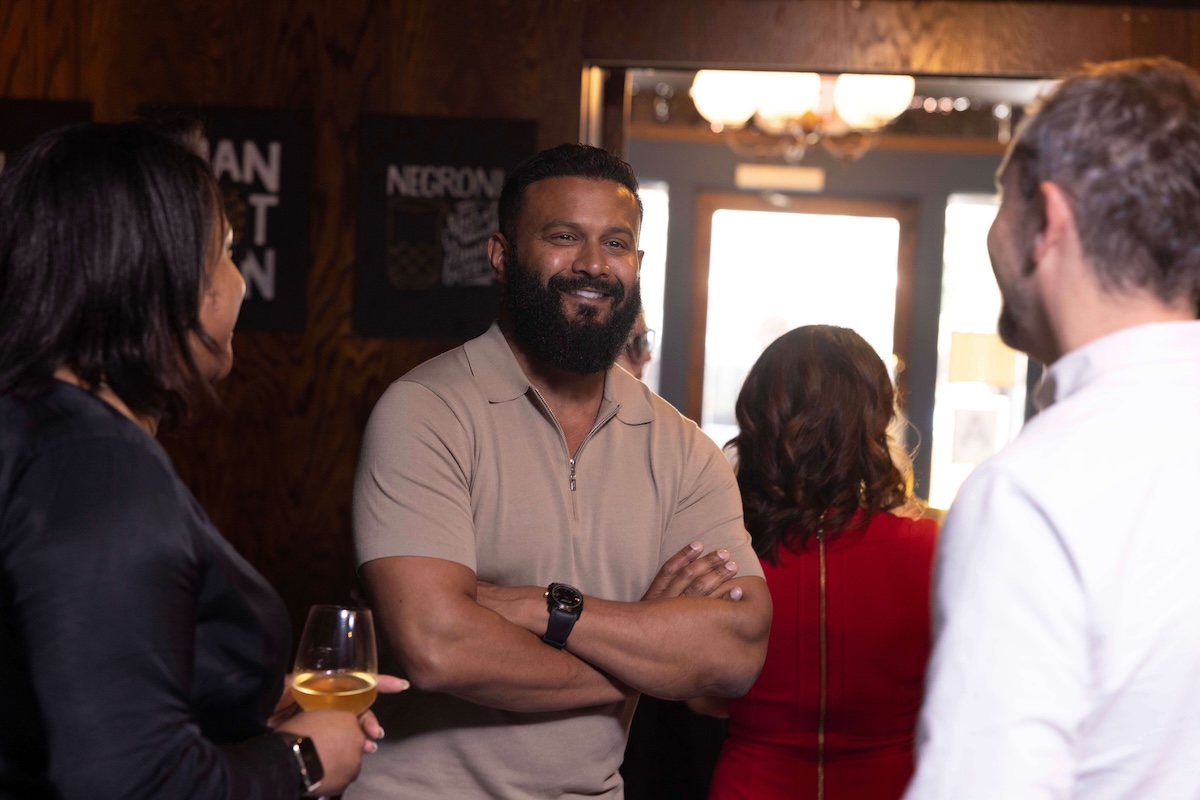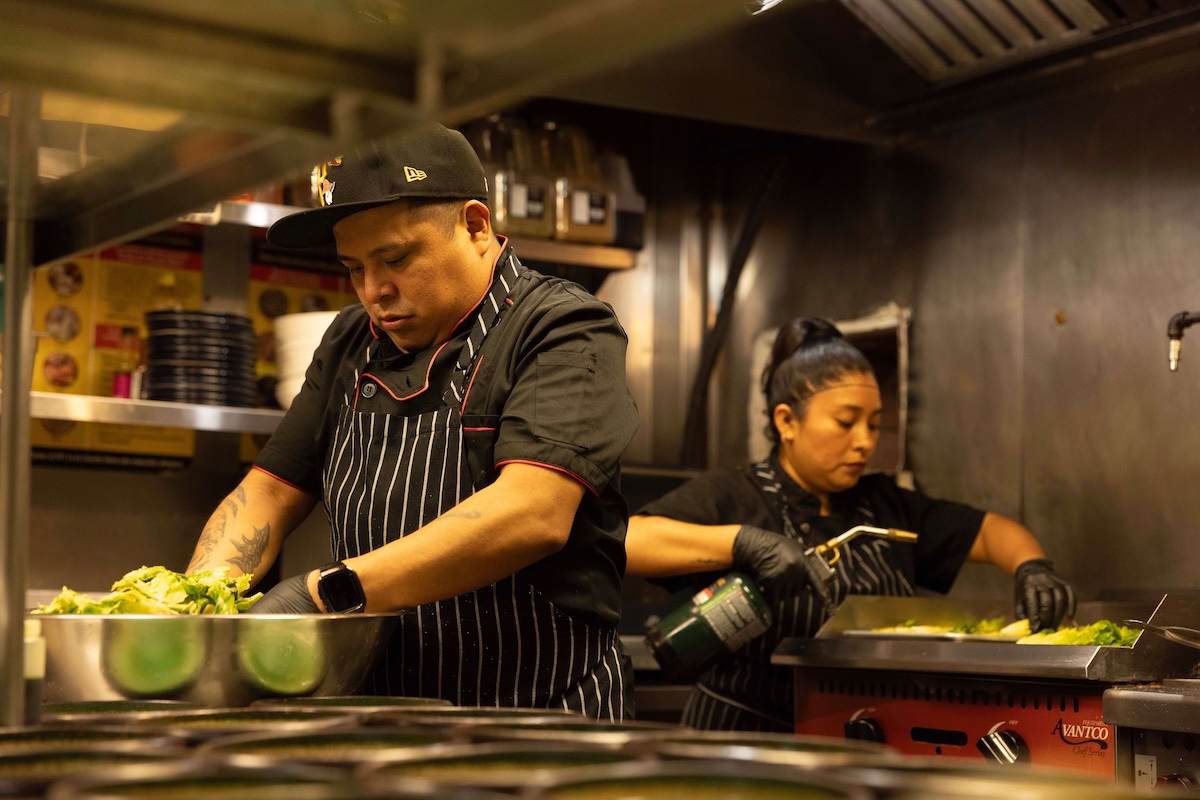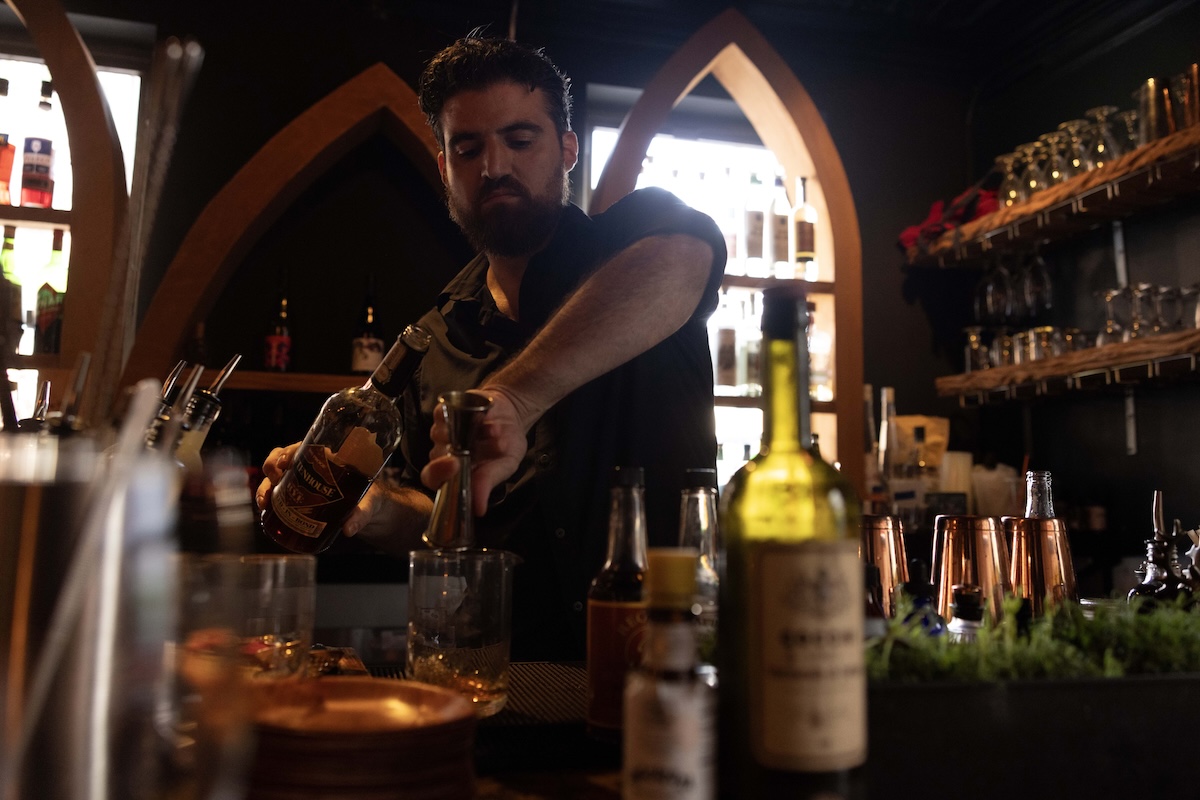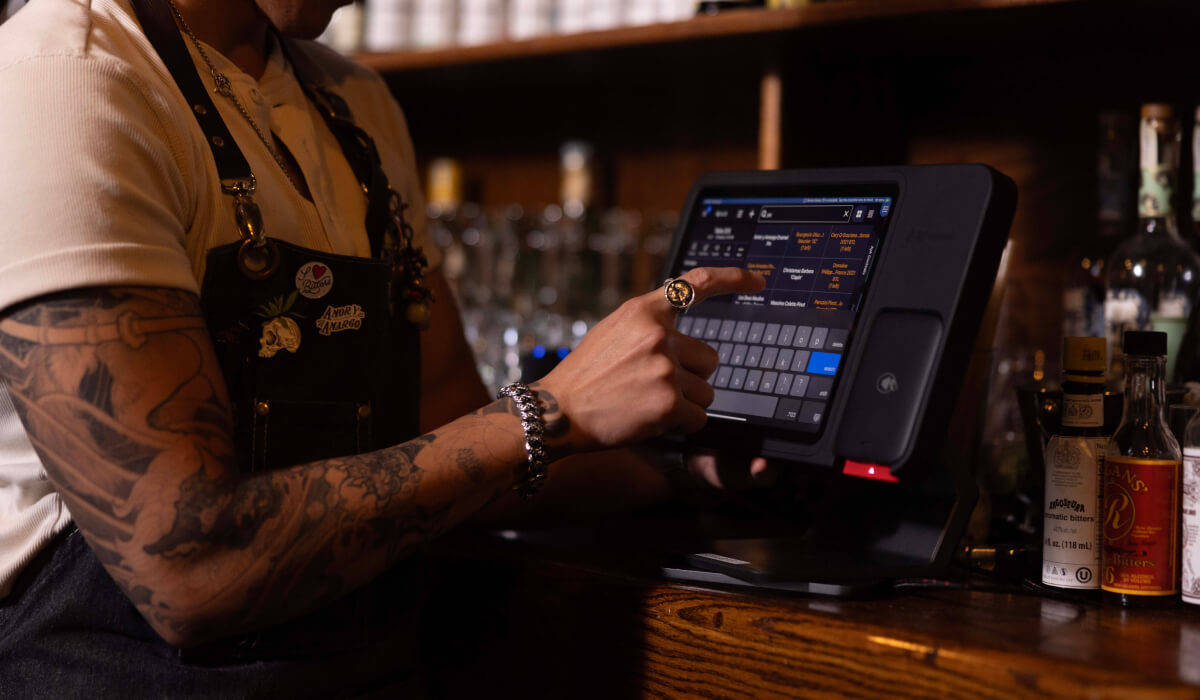
In New York City, a group of top-tier restaurateurs gathered at Avant Garden, a pioneer in vegan fine dining, for the latest industry Table Talk—an international series of roundtables that explore the biggest challenges and opportunities in the hospitality industry today.
Hosted by Lightspeed and Uber, this event brought together industry leaders and tech innovators to discuss how smart technology is transforming restaurant operations and helping restaurants thrive in “the new normal” of business in the post-pandemic world. It also showcased a new strategic partnership between Lightspeed and Uber, and the vast potential of integrated technologies to improve restaurant operations.
On Uber and Lightspeed’s strategic partnership
From managing delivery logistics to personalizing dining experiences, new seamless integrations between Lightspeed Restaurant, Uber Direct and Uber Eats Marketplace are poised to set a new standard for smart technology in restaurants while giving restaurants more flexibility and control over their delivery.
Using Lightspeed x Uber Direct—Uber’s white-label last-mile delivery solution—restaurants can take orders on their own channels and then tap into Uber’s extensive network of couriers to provide on-demand, reliable and fast deliveries at scale.
With the Lightspeed x Uber Eats Marketplace integration, restaurants can list their business and get discovered by hungry customers on Uber’s massive food delivery platform, plus get a suite of marketing tools and data.
Dax Dasilva, CEO & Founder, Lightspeed
“We’re excited to share that we are deepening our game-changing partnership with Uber, set to streamline delivery and boost efficiency for restaurants everywhere—so they can offer superior service, both in-house and online.”
Bernie Huddlestun, Regional General Manager, Uber Direct – US & Canada
“Lightspeed offers [an all-in-one solution] with both our direct integration, as well as our menu and order integration, bringing all the systems together into one place that makes it seamless for the merchant to use. There are only 4 or 5 partners that we are strategically aligned with, and part of the bar to get there is the technology. We choose strategic partners who we think are the best at what they do, and Lighspeed is doing some really strong things right now.”
On personalization in dining

Personalization is becoming a critical differentiator for restaurants today. Today’s diners demand more than just a meal; they demand personalized experiences, convenience and consistency across both in-person and online interactions. The conversation at the roundtable highlighted how important it is to leverage technology to create personalized, memorable guest experiences while maintaining the essential human touch that defines hospitality.
Bernie
“We recently heard from one of our UK clients, and she was telling us how Uber Eats Marketplace was this big growth driver for her business, but she didn’t want to lose her personal brand. So she came up with all of these small ways to inject her own brand even through the marketplace. She understands the value of the marketplace as a demand driver, but she finds all these ways to add a personal touch to it. And she was telling us that it really does work wonders for bringing customers back in, just that little extra personal flair.”
Franklin Becker, Founding Partner, Hospitality Department
“We do the same. We give specialized cards, handwritten cards, the whole nine yards depending on the brand. Truth be told, because we’re trying to take the customer away from [Uber]. We’re trying to get that customer to go to our native platform and place an order on our native platform, because we pay less for our native platform than we do for you. If I have a chance to save 2-5% by bringing them into my native platform, obviously I’d rather do it through my native platform.”
Bernie
“I think that’s great, that’s beautiful. If you can capture your own customer, use your own data, use your own branding—that’s what Uber Direct exists for. By all means, we love that, do that. That’s a beautiful evolution as a merchant like you build that brand, capture your own customer. Then we have Uber Direct to still help you out as a merchant, so that you don’t have to hire your own fleet.”
On AI’s place in hospitality

For all the buzz surrounding artificial intelligence (AI) and its potential impact on the industry, some of our attendees were steadfast that there are some roles in a restaurant that a robot can’t, or shouldn’t, fill.
Franklin
“I have a problem with AI and it’s that it’s impersonal. There’s nothing like talking to a human being. Although, it depends on the level of hospitality. If you’re in a fine dining situation, I find it to be very rude and impersonal to talk to a bot. And I hate the restaurants that are doing that. But for fast casuals, I could understand the bot because it saves money.”
“There are some things that AI does really well and where it can be really useful to restaurants, primarily with data and insights and identifying issues or opportunities that can be actioned. But it can also be used to automate or take some steps out of some of those labor-intensive manual tasks that are really low value but necessary to running the business. That’s where AI can be valuable in restaurants, by taking over some of those repetitive tasks so you can spend more time with your guests.” — Dax Dasilva, CEO & Founder, Lightspeed
On navigating new challenges with smart technology

Running a restaurant is tougher than ever, with rising costs for food and labor adding to the pressure. But increasing costs are far from being the only challenge restaurants face. Finding and keeping great staff, keeping up with social media and digital marketing—especially with Google’s ever-changing algorithms—are all top of mind for restaurateurs today. And of course, the neverending to-do list and no time to do it.
The roundtable provided a platform to discuss how Lightspeed and Uber are helping restaurants navigate these challenges by offering solutions that help restaurants control costs and boost sales, like access to real-time data, in-depth reporting on key business performance metrics and individual performance metrics, and flexible delivery options that allow restaurants more control over their delivery terms and margins.
Tren’ness Woods-Black, President & Chief Strategist, Tren’ness Woods-Black, LLC
“The overall cost of doing business has really put a chokehold on the New York hospitality scene that I haven’t seen in my three decades in the industry. We’re desperate to save the hospitality industry in New York, and the industry at large. I’m excited to hear how restaurant owners can actually harness some of the power that their tech partners have to share, and really harness that power to turn this industry around.”
“The one thing that challenges our industry more than anything is food cost is obviously constantly on the rise, but people can get around food costs. You can start to use more vegetables and more legumes or more grains, shorten up the portions of proteins in order to make more of a profit. So those things can always be done, it’s the labor that is extraordinarily high.” — Franklin Becker, Founding Partner, Hospitality Department
On keeping up with trends and changing consumer behavior

Consumer habits are shifting fast—think earlier dining times and a surge in delivery. In today’s challenging economic landscape, restaurants must be agile and responsive to shifts in consumer behavior. The roundtable discussion underscored the need for good, fast data to anticipate trends and adjust accordingly.
Dax
“We can see from our data what’s trending in restaurants—what menu items are doing well, what items aren’t doing so well—what consumers are cutting back on, and what influences their decisions when they’re choosing a restaurant. And we share that across our base. Because things can shift, and many businesses are running on intuition, maybe to their detriment because they’re not connected to data. But if you have good, clear data it’s much easier for restaurants to make the right calls for their business.”
Franklin
“Harnessing the information that Uber collects, that’s so valuable, and passing it on to your restaurant partners so that we can change our approach to really capitalize on what the guest is looking for. It would be very advantageous. When there’s negative customer feedback, turning that information over to us so that we can do the recovery ourselves. Send out an extra Uber gift certificate, whatever it might be. But we have to be able to recover that guest because that’s what we do, it’s called hospitality.”
On operational efficiency in the modern era

If there’s anything the whole group could agree on, it’s that operational efficiency is key in today’s restaurant world. Lightspeed and Uber Direct offer a streamlined solution, centralizing operations and automating tasks so restaurants can run like a well-oiled machine, without adding extra steps to their workflows or more work on overburdened teams.
Integrated solutions not only enhance efficiency but also free up valuable time and resources, allowing restaurant owners to focus on what they do best—providing the best hospitality to the people they serve.
Tren’ness
“I’m very interested in understanding how this collaboration [between Lightspeed and Uber] will empower the hospitality industry. If there was an elevator pitch that I can bring back to my members, what makes this combination so good that they’re going to decide to go with Lightspeed and Uber above the others?”
Dax
“The objective of the partnership is to make the delivery extension of the business easier to do without adding more staff or adding more work. With the direct integration of Uber Direct and Uber Eats into our platform, it just makes it frictionless for restaurants to respond to this on-demand economy, which, you know, offers a new revenue stream for these businesses. And then there’s the marketing aspect of the Uber Eats integration, which helps restaurants reach new customers and build more brand recognition.”
Key event discussions and insights
This latest industry Table Talk underscored the critical role of smart technology in the evolving restaurant industry. Here are the main takeaways from the event:
- Empowering merchants with seamless integrations: The Lightspeed x Uber integrations offer merchants a powerful, all-in-one solution that simplifies delivery management, empowering restaurants to expand their reach, streamline operations and improve their bottom line with less effort.
- Personalization in dining: In an age where diners crave personalized experiences, the integration of technology to deliver personalized experiences is quickly becoming non-negotiable. Restaurants that effectively blend these elements will stand out in a competitive market.
- Navigating challenges: With rising operational costs, staffing and other challenges, smart technology provides restaurants with tools to control costs and adapt to new trends and expectations, ensuring they remain resilient and profitable.
- Adapting to new trends and consumer behavior: Real-time data and analytics are vital to deliver a personalized experience and to adapt to changing dining habits, helping restaurants stay relevant and meet evolving customer expectations.
- Operational efficiency: Lightspeed and Uber Direct provide restaurants with the tools to run more efficiently by centralizing operations and automating tasks. This streamlined approach frees up valuable time and resources.
As the hospitality industry continues to face new challenges, innovative technology and strategic partnerships like those between Lightspeed and Uber are key to driving future success. As always, Lightspeed is committed to listening to restaurateurs and developing solutions that will empower them to thrive—today, tomorrow and with whatever the future throws their way.
Ready to see what Lightspeed can do for your business? Talk to a POS expert today.

News you care about. Tips you can use.
Everything your business needs to grow, delivered straight to your inbox.




